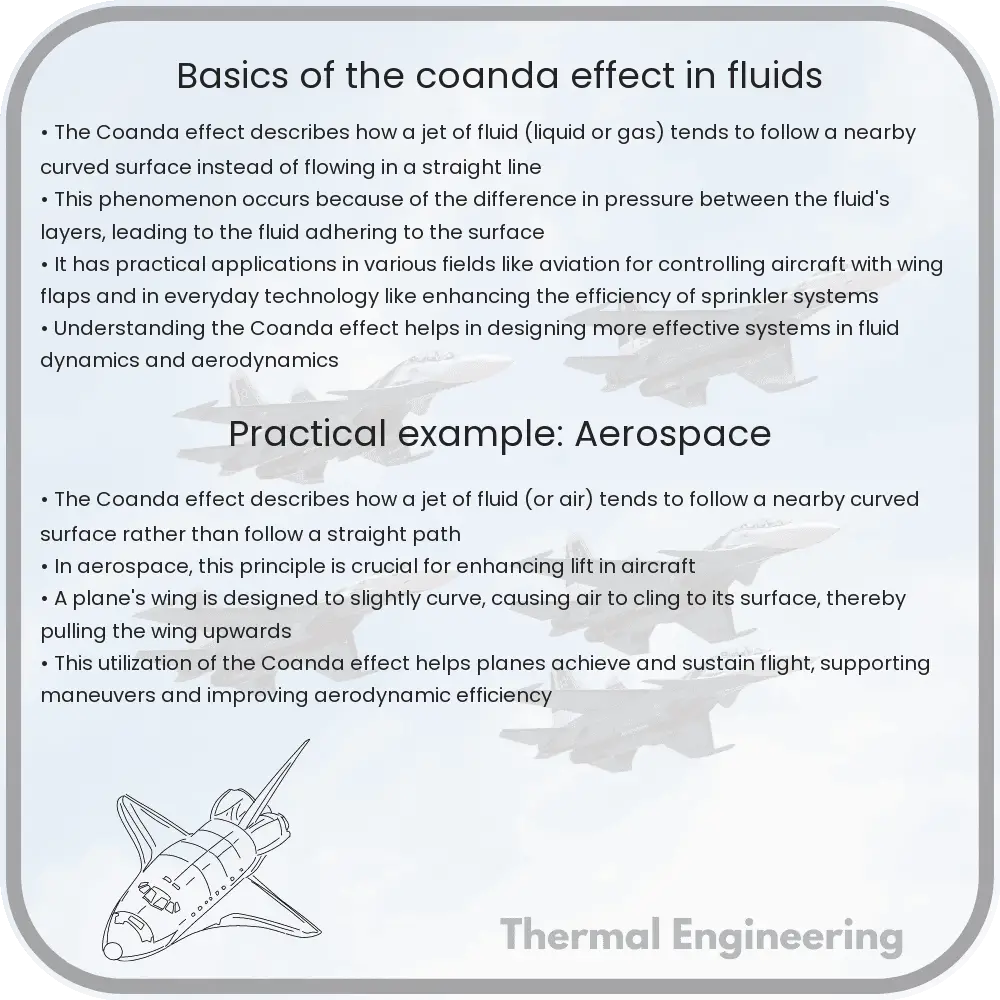Learn about the Coanda Effect, a key fluid dynamics phenomenon where fluids follow surface contours, influencing engineering design and technology.

Understanding the Coanda Effect in Fluids
The Coanda Effect is a fundamental concept in fluid dynamics, observed when a jet of fluid (which can be a liquid or a gas) attaches itself to a nearby surface and follows its contour. Named after Romanian inventor Henri Coanda, who first recognized and described this phenomenon in the early 20th century, the Coanda Effect has significant applications across various fields of engineering, including aerospace, mechanical, and civil engineering.
How the Coanda Effect Works
The basic principle underlying the Coanda Effect is that fluid molecules adhere to and travel along a surface due to the intrinsic properties of viscosity (the internal friction within the fluid) and the tendency to minimize energy expenditure. When a fluid is discharged from a nozzle or opening, it naturally seeks a path of least resistance. If a curved surface is placed close to the flow, the fluid’s inertia is insufficient to overcome the attraction to the surface, and thus it “clings” to it, following its shape.
Mathematically, this effect can be partly explained by Bernoulli’s principle, which states that an increase in the speed of the fluid occurs simultaneously with a decrease in pressure or potential energy. The higher velocity of the fluid along the contours of a surface results in lower pressure, which pulls the fluid towards the surface, helping it to stay attached.
Real-World Applications
- Aerospace Engineering: Airplane wings are designed to take advantage of the Coanda Effect. The curvature of the wing forces air to move faster over the top surface than the bottom, creating lift. Modern jet engines also use this effect to improve the efficiency of thrust.
- Automotive Engineering: The design of car bodies can incorporate aspects of the Coanda Effect to control the airflow around the vehicle, minimizing drag and improving fuel efficiency.
- Civil Engineering: The Coanda Effect is utilized in the design of roofs and structures to manage wind load and water drainage, ensuring that water flows in a controlled manner over surfaces.
- Environmental Engineering: This effect is applied in ventilation systems and in the design of equipment for pollutant removal from industrial emissions, enhancing the capture efficiency.
Exploring the Coanda Effect through Experiments
One simple experiment to observe the Coanda Effect involves a stream of water and a spoon. By holding the convex side of a spoon close to a thin stream of water, one can observe the water cling and follow the curve of the spoon. This illustrates how the flow is altered by the presence of a nearby surface, confirming the behavior predicted by the Coanda Effect.
Conclusion
Despite its seemingly simple nature, the Coanda Effect is a complex phenomenon that demonstrates the intricate behavior of fluids in motion. Its wide range of applications across various fields of engineering underscores its importance in design and innovation. Understanding this effect not only aids in comprehending fluid dynamics but also fuels advancements in technology and engineering design.
This exploratory journey into the Coanda Effect offers a glimpse into how fluids interact with surfaces, providing a foundational insight that is crucial for both students and professionals in the engineering realm.